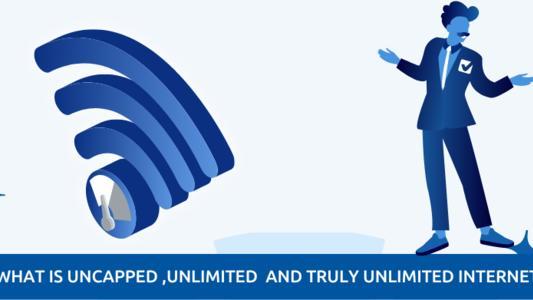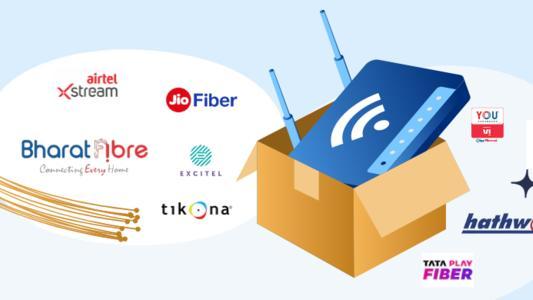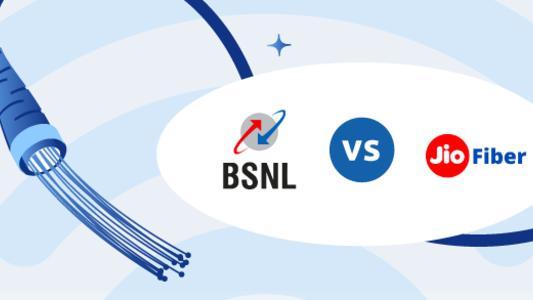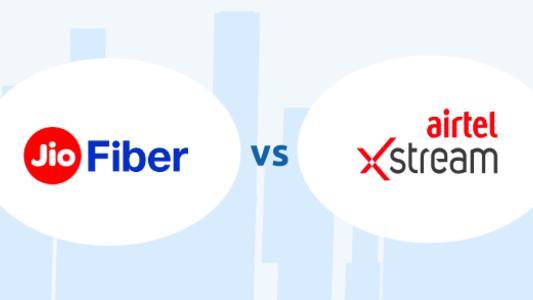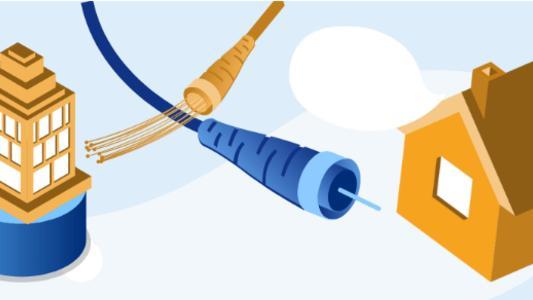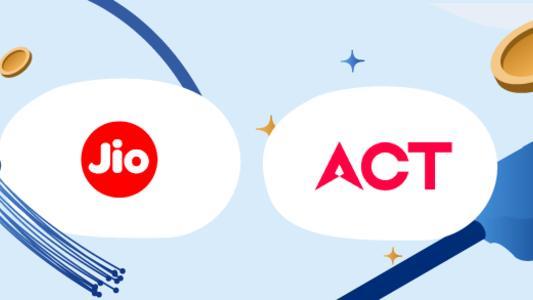How Much Broadband Data Does the Average Home Consume?
Data consumption per user depends on person to person. Whether you stay with a group of people or alone, data consumption depends on your interests and your job. Ever since COVID-19 took over our lives, there has been a severe rise in more broadband users. Almost all activities are conducted online now, be it ordering stuff or completing work. To conduct all of these activities, people require an excellent, speedy connection.
Mainly three types of users require a high amount of data, Work from home employees, Students, and Gamers. People who use two or three apps consume approximately 1 to 2 GB per day or less than that.
We have categorized and mentioned below the data you’d most likely need from your broadband connection at home as WFH employees, students, and gamers.
Also Read: Leased Line Vs Broadband: Which One Is Right For You?
Work From Home Employees
As a work from the home employee, a particular task has to be done almost every day. Those tasks will require a limited amount of data and speed. We recommend at least 30-50 MBPS download speed and a minimum of 10 MBPS upload speed for large files. More devices will require more data and higher rates.
If you are a photographer or Graphic designer, you will regularly need a higher upload and download speed. Basic business-related tasks on phones/tablets will require a minimum of 10GB per month. It is better if you get an unlimited data plan so that your work doesn't get hampered. Doing so will ensure you never run out of data if a certain number of extra tasks are added to your To-Do. Here's how much data is generally required to do a few everyday work-related tasks:
- Web browsing: 1MB per page
- Receiving/sending emails: 20-300KB, depending on attachments
- HD video streaming: 2.5GB per hour
- Video conferencing: 800MB per hour
Here are some of the most common Applications and their Required Speed + Data usage:
| Application | Recommended download speed | Recommended upload speed | Data usage |
|---|---|---|---|
| Zoom | 1.2 to 3 Mbps | 1.2 to 3 Mbps | Anywhere between 800MB to 2GB per hour |
| Slack | 200 Kbps to 4 Mbps | 100 Kbps to 600 Kbps | Anywhere between 500MB to 1.2GB per hour |
| Skype | 30 Kbps to 8 Mbps | 30 Kbps to 1.5 Mbps | Anywhere between 3.75MB to 22.5MB per minute. |
| Cisco Webex | 0.5 to 2.5 Mbps | 0.5 to 3 Mbps | Approximately 300MB per hour |
| Google Hangouts Meet | 18 Kbps to 3.2 Mbps | 12 Kbps to 3.2 Mbps | Anywhere between 1.5GB to 2GB per hour. |
Online Students
Most education centers are now converting their offline courses into online courses due to the pandemic. Since online education is the new norm, college and school-going students require a high amount of data to download their classes, complete assignments, etc. They also need a good upload and download speed to submit assignments and projects.
This is also the same age group that consumes a good amount of data for other activities like gaming, streaming movies, and shows, etc., so students worldwide require a certain amount of data for school work and to pass the time. Watching videos on youtube for research or taking a break perhaps will require a lot of data. A single student needs at least a minimum of 300GB per month to cope with their courses, which are day-to-day research for assignments and projects.
Educational institutes also require their students to use certain apps or platforms to submit assignments or stream lectures. Different applications require different amounts of data usage. Common apps used by students are google classroom which requires 150MB of data per hour. Netflix requires 3GB of data per hour for streaming good-quality movies and shows.
Streaming YouTube videos on Standard 480p resolution will consume 562.5MB of data per hour. Zoom Classes require anywhere between 540MB to 1.62GB of data per hour for one-on-one calls and up to 2.4GB for group calls.
Gamers
The gaming world requires a whole new level of data. With the gaming industry booming, their online mega gaming competitions need good data and fast speed. The industry is quickly shifting to a multiplayer future, with many big titles eschewing single-player content for a purely multiplayer experience.
However, you don’t need to worry. Even this grand gaming experience won’t impact your monthly broadband data much, as most of the popular games, today need between 40-300 MB per hour. So, if you are a hardcore gamer, you will require just a little more data than an average home user.
Downloading games depends on the device you are downloading it on, as that also requires a good amount of data at once. If you need to download games on a monthly basis, you should go for the unlimited broadband plan - especially if you live with two or more members in the same house using single WiFi.
Even if you're buying games on disc, you'll need to consider patches and the latest updates every now and then. Games like Forza 7's one-time update go up to 50GB! Moreover, games on Playstation5 and Xbox downloads and updates are only going to require more data consumption. The download size will also depend on the kind of gamer you are. For a Nintendo Switch gamer, most digital downloads are more diminutive than 10GB.
Games and titles for iPhone, iPad and Android are usually less than 1GB. Live streaming requires up to 1 GB of data per hour when streamed if you're streaming on your mobile. For tablets or other devices, data consumption of 3 GB per hour for each HD video stream.
We have made a list of the most popular games and their approximate data consumption while playing them.
Mentioned below is the approx amount of data consumed by popular games per hour:
| Name of the Game | Data consumed per hour |
|---|---|
| Fortnite | 100MB |
| Minecraft | 40MB |
| Overwatch | 135MB |
| Microsoft Flight Simulator (2020) | 700MB |
| Player Unknown’s Battlegrounds (PUBG) | 40MB |
| Dota 2 | 120MB |
| League of Legends | 45MB |
| Counter-Strike: Global Offensive | 250MB |
| Call of Duty: World War II (COD) | 40MB |
| World of Warcraft | 40MB |
| Battlefield V | 100MB |
| Rainbow Six Siege | 70MB |
| Monster Hunter: World | 30MB |
| Destiny 2 | 300MB |
| Warframe | 115MB |
| Grand Theft Auto V Online (GTA) | 60MB |
| Teamfight Tactics | 60MB |
| Rocket League | 40MB |
| Hearthstone | 3MB |
| Fall Guys: Ultimate Knockout | 70MB |
| Final Fantasy XIV | 20MB |
| Sea of Thieves | 30MB |
| Starcraft 2 | 20MB |
| Team Fortress 2 | 80MB |
Most Popular Broadband Providers For Home Use
Now that you know how much data you’d most likely need, let’s have a look at the top provides that you could consider choosing:
Airtel Xstream
Airtel fibernet technology ushers you into the future of limitless internet subscriptions. Experience high-speed internet across many devices using our current Fiber broadband connection in India.
JioFiber
JioFiber plans are the ideal blend of internet and DTH. Customers also get a bundled plan that includes not just high-speed internet but also a 4K step-top box that enables them to watch all video material on their televisions.
Hathway
Hathway Cable Datacom Ltd was previously BITV Cable Networks. This is based in Mumbai and functions as a cable television service provider. It was the first business in India to offer Internet access through the CATV network, as well as the first cable operator to establish a digital platform in 2006.
Tata Sky
Tata Sky Broadband Private Ltd., founded in 2015, is a subsidiary of Tata Sky Limited. They have constructed the first fully Fibre to the Home (FTTH) internet infrastructure in PAN India, providing unrivalled speeds and a completely reliable network.
Conclusion
Regardless of what you do or like to surf on the internet, by choosing a good broadband plan, you won’t have to worry about running out of data. To learn more about how to select a broadband provider and other updates about data connections, keep reading Selectra.
